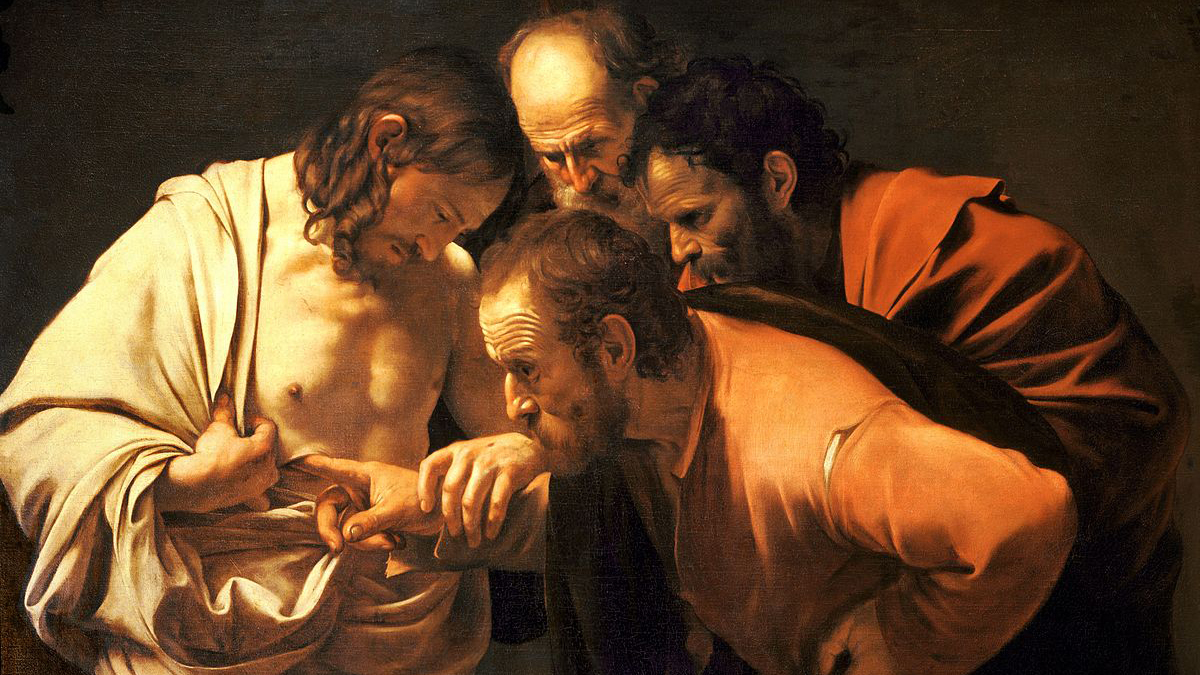Preaching John 20:19–31 in the Midst of the Pandemic
by O. Wesley Allen, Jr. on Monday, April 13, 2020

For John, the import of the resurrection has less to do with changing Jesus’ status than it does with revealing Jesus’ status as Lord. In John’s post crucifixion stories, what is emphasized is not the raising of Jesus—we are told nothing about how this occurs. What is emphasized instead is the experience of Jesus’ resurrection had by those close to Jesus.
The scene of 20:19–29 takes place on the evening of the same day as Mary’s experience of Jesus in 20:11–18. Instead of being outside the tomb, however, the disciples are hiding inside, behind locked doors, for fear of the Jews. Jesus suddenly appears to them in spite of the locked doors and greets them, “Peace be with you.” After he shows them his wounds, they rejoice that they “saw the Lord.” At this point Jesus repeats his greeting, “Peace be with you.” This time, however, the greeting is a prelude to commissioning. He sends out the disciples as God sent him. And as God breathed the spirit into the human in Genesis 2, so Jesus breathes on the disciples and gives them the Holy Spirit, whom he has claimed gives life (6:62). Along with the Spirit comes the authority to forgive and retain sins.
Thomas was not with the other disciples when all of this occurred so they report to him what has happened using the same language Mary had earlier used, “We have seen the Lord.” But Thomas claims that he himself must see the wounds and touch them (literally “place my finger” into the wounds) or he will not believe. So a week later when Jesus appears again in the house, he greets the disciples with “Peace be with you,” and then shows Thomas his wounds, offers to let him touch them, and says, “Do not doubt but believe.” At this point Thomas goes further than anyone else in the narrative of the Fourth Gospel by calling Jesus, “My Lord and my God.” Jesus’ response to this profession of faith is, “Have you believed because you have seen me? Blessed are those who have not seen and yet have come to believe.”
Interpreters have long been too hard on Thomas for requiring sight as proof for belief. Indeed, in light of the fact that the beloved disciple, Mary, and the disciples behind closed doors all believe because they have seen, preachers should look for a more sympathetic interpretation of Jesus’ reply to Thomas. In the context of chapter 20, Jesus’ reply to Thomas is not a rebuke to him so much as it is an affirmation of the readers. This blessing in turn enables the readers to affirm the purpose of the gospel that is described in the verses that follow: to support their faith through which they (i.e., we) have life (vv. 30-31).
During this season of social distancing, many of those listening to our sermons online may feel a sense of loss in having wanted the same experience of Easter they have known in the past: coming together, singing “Christ the Lord Is Risen Today,” shouting Hallelujahs, and having an Easter Egg hunt on the front lawn of the church. After that wasn’t able to occur, the story of Thomas appearing for the Second Sunday of Easter is a gift. When preachers ask people to identify with Thomas, they are inviting them to recognize that we do not all experience the resurrected Christ in the same way or at the same time, but that Christ comes to us nevertheless. Thus we can experience the resurrection even in our current circumstances.
The witness of the resurrection of Jesus Christ testifies that Christian existence—life rooted in the story, language, and interpretation of the Christ Event—has a significance that extends beyond the limits that usually define human existence, i.e., beyond time, space, and yes even death. And, indeed, that significance extends beyond the limits on life we are experiencing during the pandemic as we face isolation, economic struggles, possible illness, and yes even death. Preaching the resurrection of Jesus Christ should not focus on painting a portrait of the past stories as told in the New Testament but should paint a picture of resurrection now that enables the congregation to develop a new, concrete (albeit incomplete) vision of the present and the future in relation to the experience of Ultimate Meaning in the midst of current reality. The current state of “current reality” make this a challenge. But it is always a challenge to preach God’s life-giving grace in a death-dealing world. John’s repeated use of the language of seeing, is a reminder to the preacher to show and not just tell. We must offer our hearers scenes and stories drawn from the current crisis in which they can see resurrection and the significance of our life in Christ here and now in ways they have not yet recognized it.
